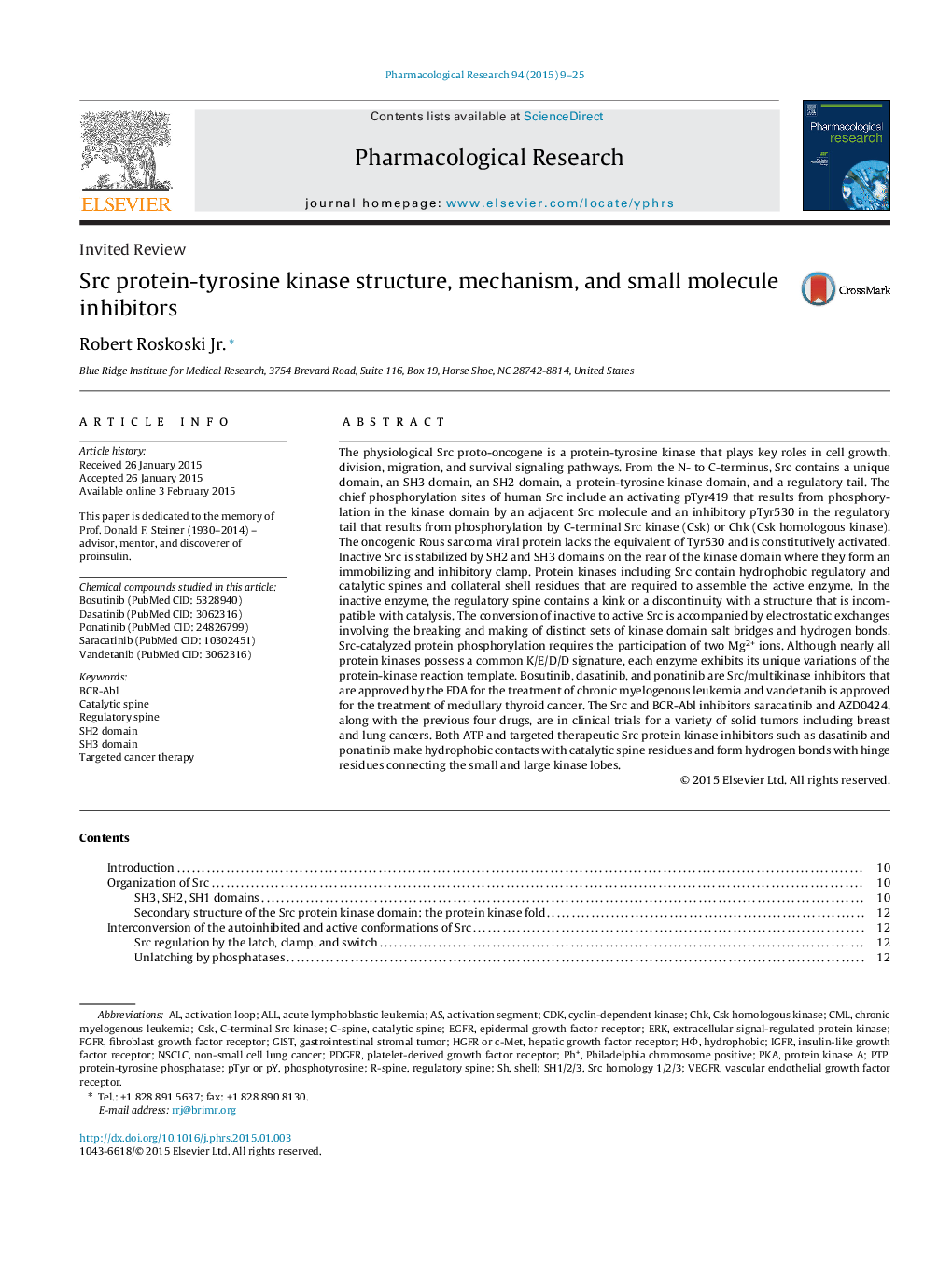| کد مقاله | کد نشریه | سال انتشار | مقاله انگلیسی | نسخه تمام متن |
|---|---|---|---|---|
| 2562089 | 1560845 | 2015 | 17 صفحه PDF | دانلود رایگان |

The physiological Src proto-oncogene is a protein-tyrosine kinase that plays key roles in cell growth, division, migration, and survival signaling pathways. From the N- to C-terminus, Src contains a unique domain, an SH3 domain, an SH2 domain, a protein-tyrosine kinase domain, and a regulatory tail. The chief phosphorylation sites of human Src include an activating pTyr419 that results from phosphorylation in the kinase domain by an adjacent Src molecule and an inhibitory pTyr530 in the regulatory tail that results from phosphorylation by C-terminal Src kinase (Csk) or Chk (Csk homologous kinase). The oncogenic Rous sarcoma viral protein lacks the equivalent of Tyr530 and is constitutively activated. Inactive Src is stabilized by SH2 and SH3 domains on the rear of the kinase domain where they form an immobilizing and inhibitory clamp. Protein kinases including Src contain hydrophobic regulatory and catalytic spines and collateral shell residues that are required to assemble the active enzyme. In the inactive enzyme, the regulatory spine contains a kink or a discontinuity with a structure that is incompatible with catalysis. The conversion of inactive to active Src is accompanied by electrostatic exchanges involving the breaking and making of distinct sets of kinase domain salt bridges and hydrogen bonds. Src-catalyzed protein phosphorylation requires the participation of two Mg2+ ions. Although nearly all protein kinases possess a common K/E/D/D signature, each enzyme exhibits its unique variations of the protein-kinase reaction template. Bosutinib, dasatinib, and ponatinib are Src/multikinase inhibitors that are approved by the FDA for the treatment of chronic myelogenous leukemia and vandetanib is approved for the treatment of medullary thyroid cancer. The Src and BCR-Abl inhibitors saracatinib and AZD0424, along with the previous four drugs, are in clinical trials for a variety of solid tumors including breast and lung cancers. Both ATP and targeted therapeutic Src protein kinase inhibitors such as dasatinib and ponatinib make hydrophobic contacts with catalytic spine residues and form hydrogen bonds with hinge residues connecting the small and large kinase lobes.
Figure optionsDownload high-quality image (241 K)Download as PowerPoint slide
Journal: Pharmacological Research - Volume 94, April 2015, Pages 9–25